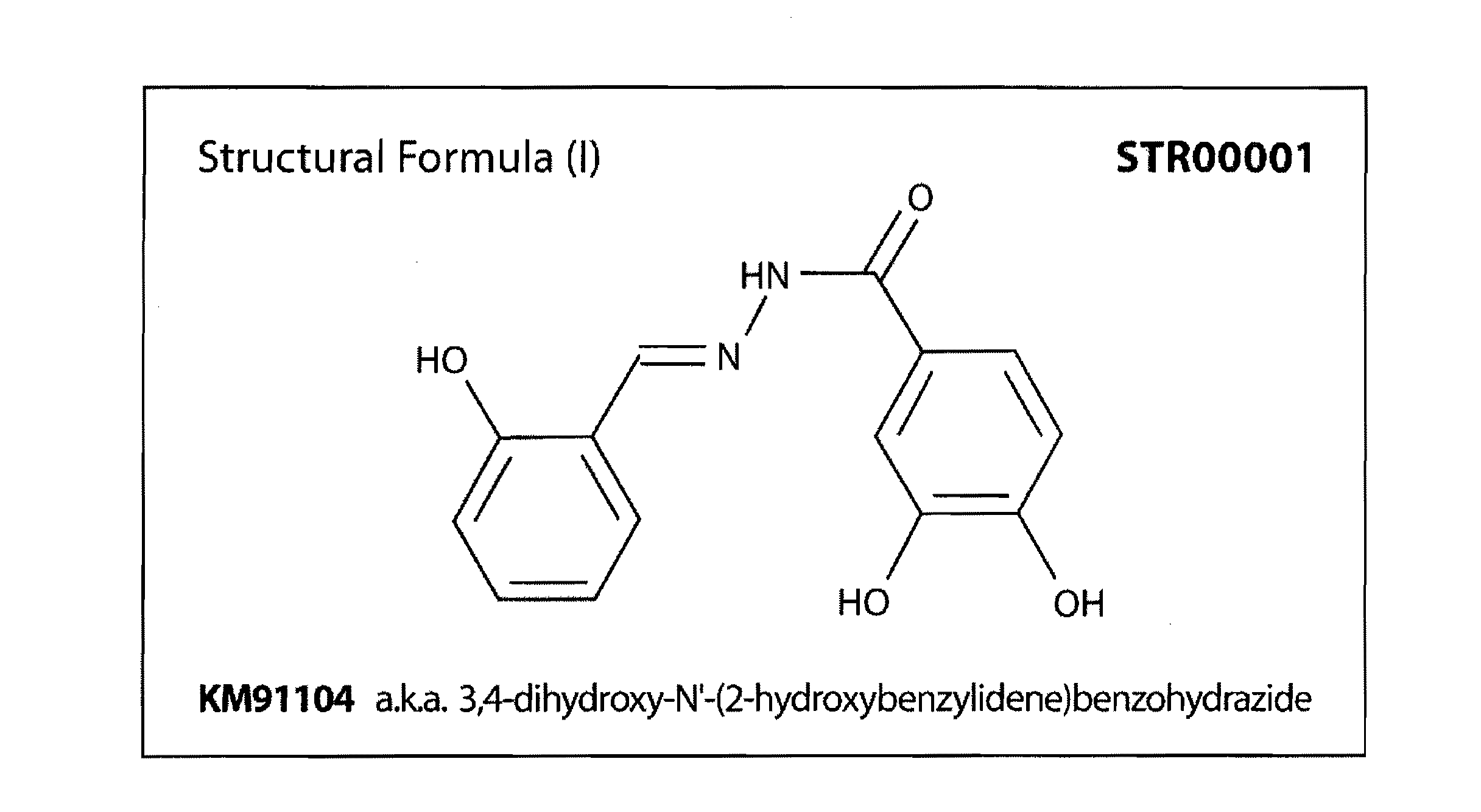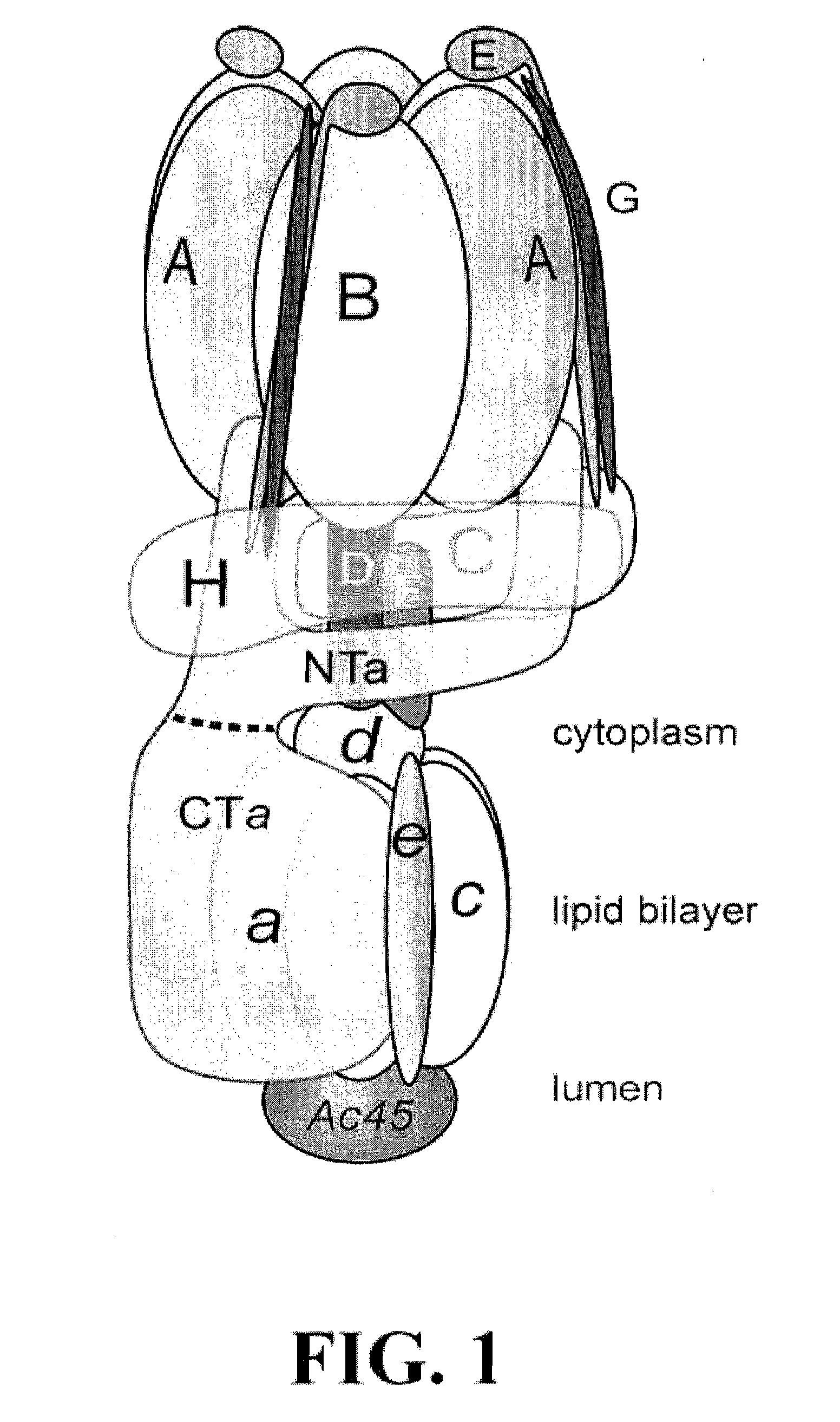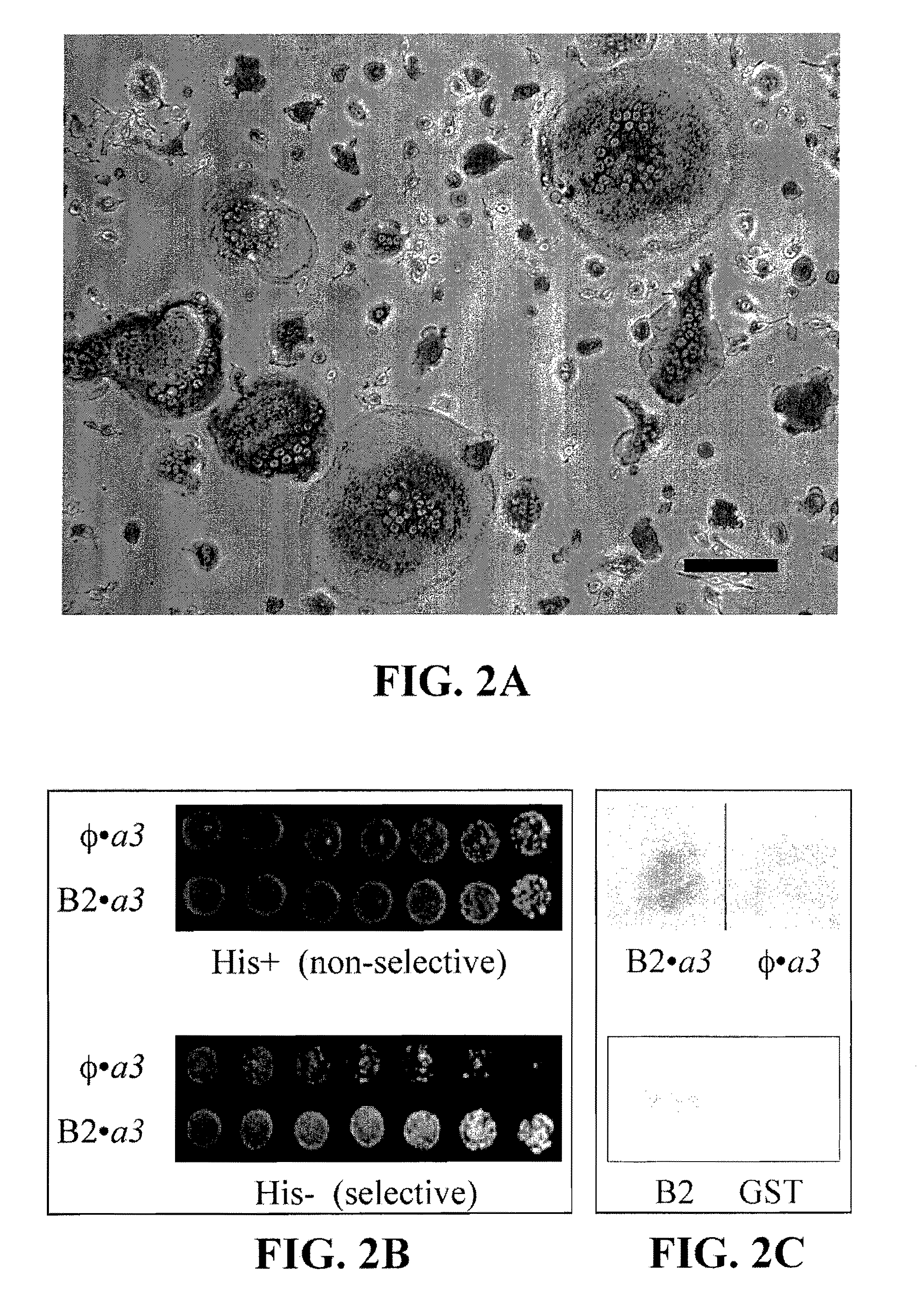COMPOUNDS, COMPOSITIONS AND TREATMENTS FOR V-ATPase RELATED DISEASES
a technology of vatpase and compound, applied in the field of compound, composition and treatment of vatpase related diseases, can solve the problems of 2.2 million op-related fractures, direct treatment costs exceeding $20 billion, survivors remaining disabled and suffering markedly reduced quality of life, and added indirect costs, so as to achieve the effect of improving severity
- Summary
- Abstract
- Description
- Claims
- Application Information
AI Technical Summary
Benefits of technology
Problems solved by technology
Method used
Image
Examples
example 1
[0252]The work presented here approaches the problem of further characterizing V-ATPase structure and function by implementing yeast two hybrid studies using a cDNA library derived from the murine RAW 264.7 cell line, which is capable of differentiating into osteoclasts in the presence of RANKL {Raschke, 1978; Hsu, 1999; Collin-Osdoby, 2003}. This system is of particular interest because of the high level of expression of V-ATPase, which is responsible for the proton secretion into the extracellular lacunae of osteoclasts through their specialized ruffled border. This function is required to dissolve bone {Blair, 1989; Vaananen, 1990}, and disruption results in the sclerosing bone disorder, osteopetrosis {Del Fattore, 2008; Kane, 2007}, while excessive activity results in pathological bone loss, as in osteoporosis. Further understanding of the structure and function of V-ATPases will aid the development of targeted therapeutics for the treatment of bone loss diseases, such as osteop...
example 2
ELISA System for Screening for Modulators of the V-ATPase N-terminal Domain a3 Subunit and B Subunits or C-Terminal Domains Thereof
[0261]The ELISA assay described in Example 1 was used with the exception that it was modified to add test compounds. A lead compound (see Example 3) was selected from a library of 10,000 compounds (DiverSet, Chembridge Inc.). Results for screening are shown in FIG. 6A, with lead candidate (described in FIG. 6B) identification by B score
example 3
In vitro Testing of 3,4-dihydroxy-N′-(2-hydroxybenzylidene)benzohydrazide
[0262]The lead compound 3,4-dihydroxy-N′-(2-hydroxybenzylidene)benzohydrazide identified in the ELISA system described in Example 2 was tested in in vitro assays. The toxicity of the lead compound on the murine RAW264.7 cells was first examined. Positive results led us to the next set of experiments. Assays were carried out to examine the effect of this compound on osteoclast formation and maturation. Resorption assays were carried out to identify the potential of the lead compound as an antiresorptive. The resorption assay revealed that the lead compound inhibited resorption without affecting osteoclast formation.
[0263]Bone resorption (FIGS. 13 and 14) was assayed using the following method. RAW 264.7 cells were differentiated on synthetic mineralized surfaces in 96 well Corning Osteo Assay Surface plates with 100 ng / ml RANK ligand. Wells were simultaneously treated with the lead compound. Cells were cultured ...
PUM
| Property | Measurement | Unit |
|---|---|---|
| Power | aaaaa | aaaaa |
| Composition | aaaaa | aaaaa |
| Electrical resistance | aaaaa | aaaaa |
Abstract
Description
Claims
Application Information
 Login to View More
Login to View More - R&D
- Intellectual Property
- Life Sciences
- Materials
- Tech Scout
- Unparalleled Data Quality
- Higher Quality Content
- 60% Fewer Hallucinations
Browse by: Latest US Patents, China's latest patents, Technical Efficacy Thesaurus, Application Domain, Technology Topic, Popular Technical Reports.
© 2025 PatSnap. All rights reserved.Legal|Privacy policy|Modern Slavery Act Transparency Statement|Sitemap|About US| Contact US: help@patsnap.com



